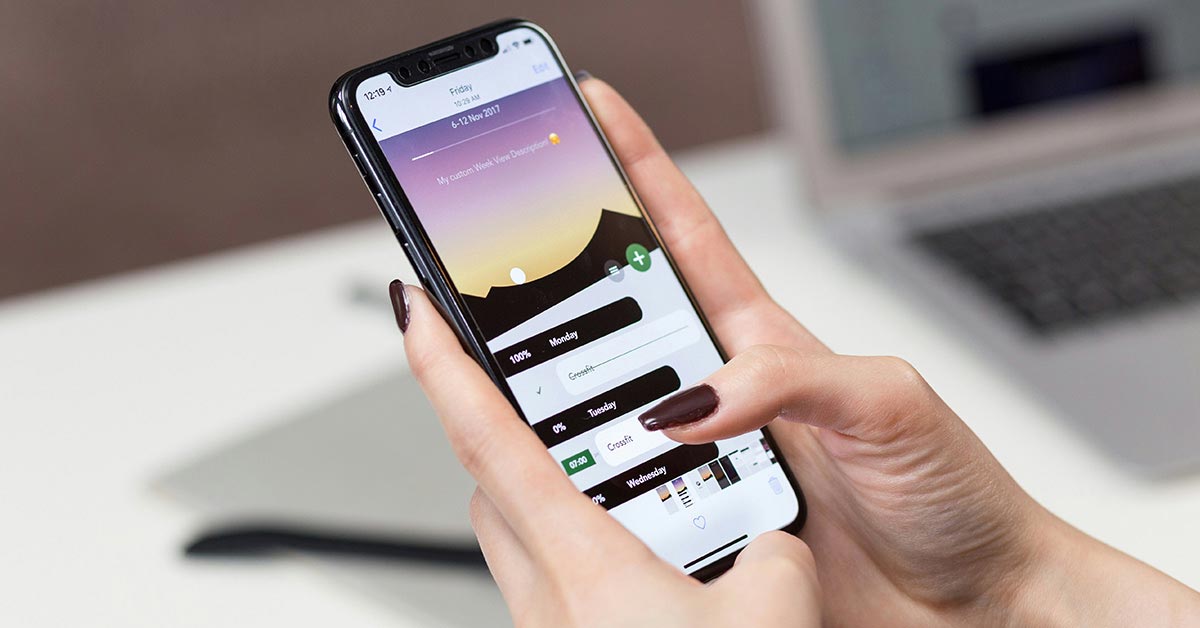Software development companies following mobile app security best practices have become more important than ever when looking at the numbers of users worldwide versus the cyber threats and attacks as 1% of global app users experience cyber threat encounters each year.
Statista confirms that there were over 5 billion global mobile app users in 2022 while there were over 5.4 million mobile users cyber attacks in 2023. Statista also reveals that Australia, the UK, the US, China, and Canada were among the top 10 countries with the most cyber threat encounters in 2022.
Discover the best mobile app security best practices that could prevent these malicious attacks and protect user data and privacy to prevent data breaches and insecure access control measures.
What Are Mobile Security Best Practices?
Mobile app security best practices should be implemented by every service provider, particularly a custom software development company integrating newer technologies, implementing company-specific security measures, and tailoring mobile applications to suit business needs.
A trusted mobile app development company conducts thorough mobile application security testing for quality assurance and provides ongoing support and maintenance services to ensure security issues remain minimal or non-existent after deployment. However, much more happens behind the curtains.
Why Mobile App Security Matters?
Beyond the frightening statistics, mobile app security best practices are important because they prevent data breaches, source code tampering, and sensitive data leakage. Malicious cyber attackers steal private data for monetary reasons, and cyber threats can decrease app store downloads.
Statista shows that up to 52.09% of global mobile app users were exposed to adware threats in 2023, with up to 11.04% of users having trojan malware exposures in the same year. Meanwhile, the mobile phishing rate is 484.5 thousand exposed North Americans in 2022, with Europe having 462 thousand.
Common Risks That Endanger Mobile App Security
Prioritising mobile app security is essential to prevent common risks for users and businesses, including:
- Absence of Multi-Factor Authentication: High-level authentication confirms authorised users.
- Code Tampering: Cyber attackers alter the source code to create fake or fraudulent versions.
- Data Leakage: Methods of storing data incorrectly that lead to unintentional leaks.
- Everyday API Threats: Repeatedly using insecure API keys that make the app vulnerable.
- Improper Session Handling: Cyber attackers can hijack sessions if not handled properly.
- Insecure Credential Storage: Incorrect user credential storage is an easy target for breaches.
- Insufficient Testing: Overlooked vulnerabilities can be tested and penetrated by cyber attackers.
- Malware Attachments: Insecure third-party integrations that app integrity and performance.
- Phishing Attacks: Fraudulent attempts to gain access to sensitive information.
- Poor Encryption Practices: Poor encryption makes data more accessible to unauthorised users.
- Rogue Mobile Apps: Fake app versions similar to yours that trick users into stealing information.
- Unpatched Software: Using outdated software updates leaves the mobile app vulnerable.
- Unprotected Network Traffic: Unsecured networks allow transmitted data to be manipulated.
- Unrestricted File Uploads: Unrestricted uploads can allow malicious malware uploads.
- Weak Server-Side Security Measures: Paves the path for cyber attackers to access data.
22 Mobile App Security Best Practices to Secure Code and Data
The list of common threats isn’t comprehensive. Evolving risks are a threat, and cyber threats evolve as much as technology does. Maintaining your app is integral. However, here is a comprehensive list of mobile app security best practices to ensure effective security for data, users, and businesses.
1. Write Secure Source Code
Secure code on the server and client-side infrastructure to prevent cross-site scripting (XSS), a common security vulnerability that allows attackers to inject malicious scripts into web and mobile apps. Effective risk management in software development prevents most malicious attacks and breaches.
Writing clean, secure source code is the first step in protecting mobile apps against evolving threats. Use secure coding techniques to ensure the app code has an extra layer of security, and conduct regular code reviews in the maintenance stage to protect the source code from malicious scripts.
2. Use Code-Signing Certificates
One of the underrated practices is to implement digital signatures within the code. Digital signatures are a form of encryption that validates the authentication of users. Developers can digitally sign the code with a product key while providing separate keys for the public or app users.
Additionally, a code-signing certificate indicates that an application is secure and from a trusted source, reinforcing your trust among customers and users to increase app store downloads and installs. The certificate also reassuares users that cyber attackers haven’t tampered with the code.
3. Reinforce App Integrity and Compliance
Mobile application security and integrity depend on guidelines provided by the App Stores. For example, Android has security tips mobile developers must use to launch apps in its App Stores. Some include installing only signed apps, access control restrictions, and authentication guidelines.
Apple also has a comprehensive guide on iOS security. App integrity and compliance ensure the mobile app’s code is secure from the most common mobile application security vulnerabilities. Both App Stores guide compliance, integrity, and security, which are essential in mobile app development.
4. Keep Security Practices Transparent
Ensure security by adopting observability to allow businesses and product owners to continue monitoring security features, metrics, and mobile app security measures in real-time to identify new security vulnerabilities that must be addressed.
Observability should be implemented during and after deployment as development teams can continuously monitor changes in the development process. Transparency, collaboration, and observability play major roles in Agile methodologies for software or mobile development.
5. Perform Thorough and Regular Security Testing
Reliable security measures begin by prioritising mobile app security through thorough mobile application security testing, penetration testing, quality assurance checks, and ongoing maintenance after app deployment. Our software testing methodologies guide explains some practices and methods.
Security testing, especially penetration testing, is essential to identify a security vulnerability. Malicious attackers and evolving risks also remain after your app hits the store. Continue conducting thorough security checks in an ongoing maintenance program to identify potential threats and vulnerabilities.
6. Use High-Level, Multi-Factor Authentication
Mobile applications are at risk of malicious injection through user-generated content (UGC), and secure authentication methods can prevent access to sensitive information or damage app reputations through cyber attackers hacking apps to collect information from your users through UGC.
One secure method is to implement multi-factor authentication, which sends a one-time PIN (OTP) to the device when logging into a platform. Meanwhile, biometric authentication requires the user’s fingerprints or uses some form of facial recognition before it opens a mobile app.
The multi-factor authentication method and biometric authentication method are two of the most secure forms of user authentication that protect users, businesses, and sensitive data. A thorough requirements analysis for software development could reveal which type your app needs.
7. Encrypt Data to Strengthen the Security
Many apps are used by multiple users on different devices and operating systems, making data encryption another essential best practice to ensure business and user data security. Encrypt data to protect sensitive information from potential device and OS vulnerabilities and data breaches.
Encrypt data using symmetric or asymmetric data encryption techniques to scramble data to a point where it’s unreadable to malicious users. Symmetric encryption uses the same key for encryption and decryption while asymmetric encryption uses different security keys for encryption and decryption.
8. Secure Backend Servers and the Network
Secure backend servers and networks when building mobile applications. Use encryption and containerisation for data storage to protect sensitive data on a mobile app. Securing the backend and network servers will prevent data leaks and unauthorised access.
Our full-stack development company with back-end specialists implements secure servers to ensure safe data storage and access control measures from unauthorised services on third-party libraries. We also secure the communication between the network and servers with intrusion detection systems.
9. Use the Latest Security Protocols and Techniques
Cyber attackers often test algorithms and other security protocols to break into protected systems. Using outdated security protocols or coding techniques will result in cybercrime once the attackers use an algorithm from a later version than what was installed on your mobile application.
One of the most popular algorithms at this time is the Advanced Encryption Standard (AES), an algorithm that uses symmetric key encryption. We don’t do blockchain at this time, but blockchain developers use 512-bit encryption, 256-bit encryption, and SHA-256 for hashing.
10. Secure All Communication Channels
Secure all communication channels between the network and servers for application-level threats and in instant messaging applications for device-level threats. For example, add an auto-delete feature to instant messaging or team collaboration mobile application security measures.
Meanwhile, implement a transport layer security (TLS) to protect communication channels between the network and servers to reduce potential threats and be ready for evolving risks. Transport layer security is essential for application-level security while an auto-delete feature secures device chats.
11. Securing and Managing API Keys
API keys behave like mobile application touchpoints and include the integration of third-party services from multiple third-party libraries. Unfortunately, cyber attackers often gain access through untrusted third-party services integrated from unsecured third-party libraries, placing API keys at risk.
Use secure third-party services like API gateways with rate limiting to prevent denial of service (DOS) and injection attacks on your mobile app. Only use secure API keys from third-party libraries to facilitate safer data exchanges. Secure user authentication and authorisation also protect API keys.
12. Use and Store Secure Containers
Containers are encryption security keys typically stored during the development process. Improve mobile application security and prevent malicious cyber attackers and security breaches by storing containers and security keys in external data centers, not local data centers.
Enhance mobile application security by leveraging advanced security protocols like the 256-bit AES encryption with SHA-256 for hashing to keep the app secure by storing encryption security keys in a cloud platform. Consider cloud migration services if your app isn’t storing data on the cloud yet.
13. Limited Permissions and Data Privileges
Limit permissions and identify data permissions while implementing the least privilege approach to ensure only a limited number of authorised users are accessing sensitive information. It’s a role-based access control to limit data access on mobile applications.
Grant and limit access to ensure the mobile app runs smoothly without the risk of malicious threats. Regularly review the permissions for different application components to revoke unnecessary permissions identified that may cause security issues.
14. Store Sensitive Data Off the User’s Device
Data storage on cloud platforms is far more secure than using the user’s mobile device to store sensitive data. Data protection becomes a great challenge when data is stored on any mobile device as the OS or device could have evolving vulnerabilities with system updates.
Instead, store data externally or on cloud servers to protect sensitive data from malicious cyber-attacks and data breaches. Leverage the benefits of working with an AWS partner to secure the code and user data. We also partner with Microsoft Azure and Google Cloud and help with private or hybrid clouds.
15. Secure Data Storage and Implement Access Controls
Data and privacy laws will change with evolving risks, but keep user and business data safe by preventing the storage of data on application logs, keyboard caches, and IPC mechanisms when users interact with the device. Then, protect sensitive data by implementing strict access controls.
Limit who can gain access to data in mobile apps by using role-based access control (RBAC) techniques as part of the essential mobile app security best practices. Limited data access using the RBAC model in businesses is important to assign access to roles defined by the organisation.
16. Use File-Level and Database Encryption
Database encryption refers to how the device automatically encrypts a file system or database within the device when it needs to store information in the device or local storage system. SQLite database encryption modules work wonders for improving locally stored data.
Alternatively, ensure file-level encryption for all sensitive data that must be stored in the device, private server, or local database. Our digital strategy consultants can provide expert advice for data storage when device storage is non-negotiable. It isn’t recommended but sometimes needed.
17. Deploy Tamper Detection With Real-Time Alerts
Tamper detection is one of the often overlooked mobile app security best practices that allows developers, product owners, businesses, and app owners to receive alerts when threats arise. The real-time notifications enhance user data security and further limit data access.
Tamper detection adds an extra layer of security to ensure the right person receives alerts as soon as malicious attackers try to inject cross-site scripting to expose your users to fraudulent activities, which is integral to the banking, finance, and insurance industries.
18. Build An Incident Response Plan
An incident response plan allows owners and developers of mobile applications to respond swiftly to security issues and incidents. The strategy is ideal to implement alongside the tamper detection tools to ensure all responsible individuals can respond quickly to sensitive information threats.
Error handling mobile applicaiton security measures encourage readiness because the evolution of threats always challenges experts to quickly adapt, overcome, and diminish the risks. Ultimately, reduced risk is inevitable because the tamper system detectors alert you about vulnerabilities fast.
19. Backup and Regularly Review Data for Easy Recovery
Use a robust backup strategy to reinforce security measures during and after the development phase. A backup strategy allows the application to store sensitive data in secure servers at frequent intervals, being one of the key mobile application security measures that make data recovery possible.
Breaches, cybercrime, and ransomware are evolving threats, with an IBM report showing that the global cost was over $4 million or £3 million in 2024. Review and back up sensitive data regularly to ensure your business doesn’t suffer extreme losses and an extensive recovery process after an attack.
20. Ensure Proper Session Handling and Timeouts
Good session handling can ensure the application sleeps after a certain period of inactivity. The development of proper session handling is one of the top mobile app security best practices to reduce any security issues or security vulnerabilities while apps are running in the background.
Security breaches can occur when applications run in the background, and it’s common for users to leave apps running between device interaction sessions. It’s a weakness some developers overlook. Implement security measures like session timeout and single-sign-on (SSO) to prevent breaches.
21. Implement Regular Patching and Updates
Regularly release security and patch updates to address any possible security issues in the app code. Proper error handling and patch updates ensure data protection and improved security features as operating systems and devices upgrade software versions.
Secure coding practices include the regular update and patch strategy to create code obfuscation. The term code obfuscation refers to code that becomes harder and harder to read, making cyber villains’ jobs as challenging as they make our security measures.
22. Conduct a Regular Dynamic Analysis on Existing Apps
Regular testing, reviews, and patching are important. However, a dynamic analysis is one of the mobile app security best practices every developer should follow after deploying apps in the App Store to ensure the user’s device and security are performing as expected.
The analysis uses real-time data collected after users already interact with the application and should be done regularly. Remember to use observability to allow product owners to see the data and make informed decisions about patch updates and using the latest security protocols and algorithms.
Secure Your Mobile Apps With Pulsion’s Security Experts
Partner with Pulsion to secure your mobile app with comprehensive data access controls and security measures that meet all of the mobile app security best practices. The only user who will gain access to your mobile applications is the one authorised to interact with them.
We are a leading mobile app development company in the UK, having served numerous clients and completed multiple successful case studies. We’re also a registered cloud provider and understand all the most popular mobile app technologies and frameworks.
Additionally, we provide ongoing support and maintenance for all off-the-shelf and custom software development. Keep your app secure, and know that you have a qualified team of experts maintaining the integrity of your mobile application. Contact us today to discuss your security needs.
Mobile App Security Best Practices Conclusion
Mobile app security best practices guide developers, businesses, and product owners to ensure mobile security that protects user data, controls access, and limits permissions. Every mobile application will remain as secure as possible if following the best practices.
Avoid malicious cyber attacks and fraudulent UGC injections to protect your mobile app’s code and business reputation. Add an extra layer of protection by partnering with a trusted mobile app development company in the UK. Contact us to discuss every security need and ongoing support.
Mobile App Security Best Practices FAQs
What are two types of security risks in mobile apps?
Security issues occur on two levels: the device level and the application level. Device-level risks include faulty data access control measures once an operating system updates to the latest version. Application-level risks include code tampering when the source code isn’t secure enough.
How can businesses implement mobile app security best practices?
Businesses can empower users, even with bring-your-own-device (BOYD) policies. Educate employees when you sanitise user input and strengthen authorisation for user credentials on personnel-owned devices before they install business applications. Have your IT experts secure personnel devices before any application is downloaded or installed on the iOS or Android device.
Which app is best for mobile security?
We recommend using our custom software development company to ensure security on any device with a bespoke security application. Customise your security in a bespoke app all users must download if using business-owned devices to protect data and app integrity. Other reliable mobile app security options for normal users include Astra, GaurdSquare, AppKnox, App-Ray, and Bitdefender.














